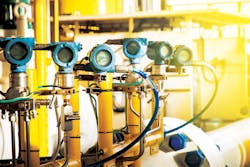High Marks
With water utilities facing growing challenges such as aging infrastructure, financial constraints, climate change and strict regulatory requirements, the need to better assess and improve performance to promote efficiency, transparency and accountability has never been greater.
Benchmarking has become a key practice in the industry to set, promote and achieve performance targets. A fundamental requirement of good management, benchmarking helps managers and regulators identify historical trends, determine today’s baseline performance and quantify relative performance across the sector.
For years, few tools existed to help water utilities develop reliable and effective performance benchmarking practices. Thankfully, that is changing.
The Water Research Foundation (WRF) addressed this issue in 2015 by creating a benchmarking tool to help utilities plan, implement, measure and monitor organizational performance enhancements against 10 specific attributes of effectively managed utilities. Those attributes, identified by the U.S. Environmental Protection Agency along with six major water and wastewater industry associations and representatives from 16 utility systems, include:
- Product quality;
- Customer satisfaction;
- Employee and leadership development;
- Operational optimization;
- Financial viability;
- Infrastructure stability;
- Operational resiliency;
- Community sustainability;
- Water resource adequacy; and
- Stakeholder understanding and support.
The practical tool, developed as part of WRF’s Performance Benchmarking for Effectively Managed Water Utilities report, enables utilities to conduct a self-assessment in order to improve performance in one or all of the 10 attributes to fit with their strategic goals.
Since its release, WRF’s self-assessment benchmarking tool has become a useful asset for identifying gaps in performance and developing strategies to reduce those gaps.
Smart Technology
Smart technology such as automated meter reading (AMR) and advanced metering infrastructure (AMI) carry significant benefits for utilities in helping to benchmark performance and optimize their infrastructure.
AMR automatically collects consumption, diagnostic and status information from water meters without the need for a manual meter read. The systems can be walk-by or drive-by and save utilities the expense of visiting every meter while streamlining and improving the accuracy of data collection. The information, coupled with analytics, can help utilities and their customers better manage water use.
A more robust solution than AMR, AMI is a key component of a smart water system that includes smart meters, communication networks and data management systems, which enable two-way communication between utilities and customers. AMI enables utilities to make decisions based on performance and insights in near-real time.
Strategic deployment of AMR and AMI technology is an effective way to optimize performance and carries additional benefits, such as improving safety and increasing customer satisfaction. Prior to smart water systems, no consistent method existed for utilities to identify how customers use water or to monitor non-revenue water due to leaks or theft.
With the data collected from these systems, utilities can effectively gauge performance and account for every drop of water. Immediately following its system deployment, one utility in the northeastern U.S. caught a leak that was hemorrhaging 200,000 gal of treated water per day. That equals the amount of water used daily by 2,500 people.
Data from smart water systems also helps utilities communicate more openly with customers. Utilities can give their customers more insight into their personal water use, helping them identify areas where they can conserve water and locate potential leaks. These types of open conversations build trust between utilities and their customers.
A New Standard
Water utilities that have invested in smart water systems already are tapping the technology to improve water management and enhance customer service. They are able to share data and other insights with other public service providers, such as electric utilities and transportation departments, to improve overall city operations.
According to Bevin Beaudet, a former water utilities director for Palm Beach County, Fla., who now offers private consulting, smart water utilities will be the new standard within 10 to 15 years, and all usage will be tracked and optimized in real time.
Utilities are being tasked with minimizing the costs associated with protecting resources to ensure a reliable supply of water. AMR and AMI are breathing new life into performance benchmarking while presenting options to deliver better service and optimize infrastructure to meet future growth.
